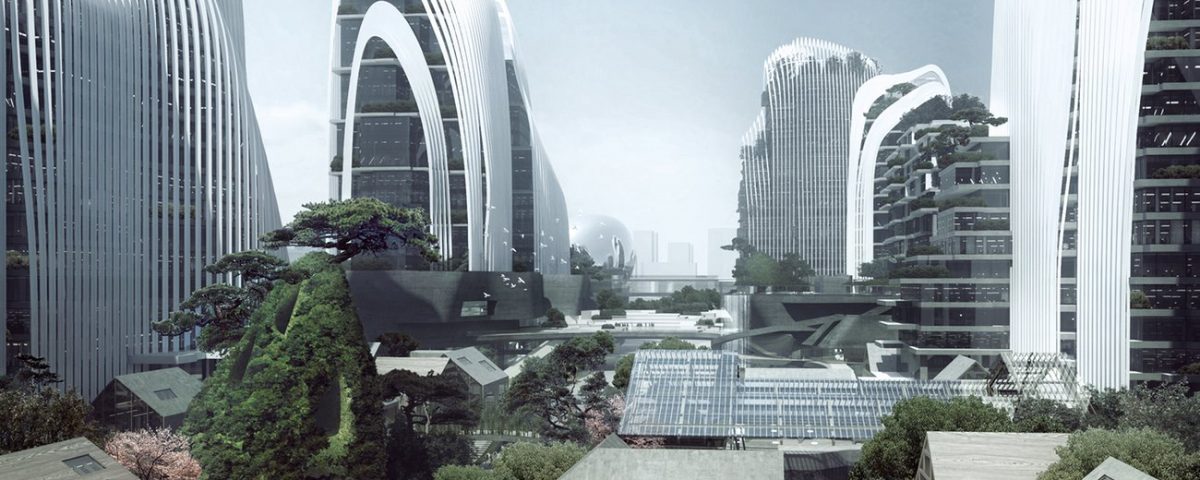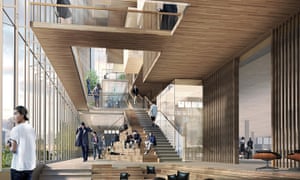Does a pretty office make a productive workforce?

Five innovative office designs from Clerkenwell Design Week
August 11, 2016
The role of workplace design in employee engagement
August 17, 2016Does a pretty office make a productive workforce?

The view from office windows is rarely the stuff of picture postcards. Yet the scenic quality of our daily environments has a direct correlation on our personal well being, researchers say.
The team from Warwick Business School used results from an online game called Scenic-Or-Not, which features 217,000 images from around Britain and asks people to rate them according to their “scenicness”. The highest ranked pictures are broadly predictable: snow-capped mountains, tree-banked rivers, wild seascapes.
More surprising was the connection between where people live and their sense of wellbeing. Working off the health data in the 2011 census, the researchers were able to demonstrate that residents in more scenic areas are happier and healthier that those residing in less eye-catching locales.
The reasons why await further scientific investigation, yet lead researcher Chanuki Seresinhe believes it has much to do with our mental disposition (a much publicised recent study shows that exposure to nature reduces stress, for instance) and our behavioural traits (scenic spots prompt us to get outdoors and be more active).
Seresinhe argues that the implications for business are profound. “People spend a lot of time at work and their environment definitely affects them. So if pleasant scenery makes people feel better, there’s a good case that the scenicness of their working environment will have a similar effect.”
Boosting staff productivity
Of course, the aesthetics of workplaces and its impact on employee wellbeing are nothing new. A slew of research reveals how everything from artwork on the walls to workstations with natural light boost productivity.
“Longer distance views, away from computer screens or written documents, allow the eyes to adjust and re-focus, which reduces fatigue, headaches and the effects of eye strain in the long term. Views also have a positive impact on wellbeing, in part by providing a psychological connection with other groups of people while in a safe space,” states a report from the World Green Building Council.
In recent years, considerable energy has gone into showing how plants and flowers brighten the work experience. “Biophilia” (the research strand, not the Björk album) demonstrates how green office spaces generate physiological responses such as increased brain activity and lower stress hormones. A Harvard University paper last year found that the cognitive performance of “green” office workers was double that of those working in conventional environments.
But “green” isn’t necessarily scenic. When it comes to green space, the issue is quality, not quantity, says Seresinhe. “Just because an area is green doesn’t mean it’s a beautiful area of green,” she says, citing the examples of a derelict recreational park or a field with an industrial park in the middle.
Improving city offices
The apparent logic of the “scenic” argument is that companies should relocate to the Lake District or the banks of a Scottish loch. However, the arrival of UK plc in the country’s beauty spots would dramatically reduce their scenic qualities. And urban and peri-urban areas can be scenic too (this counters the other obvious argument that rural-dwellers should work more from home).
“It’s not about nature versus the city,” Serensinhe says. “The scenic effect exists in cities too. Buildings can be scenic [and] there are things you can do to make the urban environment more scenic as well.”
John Alker, the campaign and policy director for the UK Green Building Council, concurs and cites Crown Estate’s refurbishment of a grade-two listed property in London’s West End as an example of urban “healthy building” design. The UK developer increased the “scenicness” of the city-centre property by equipping it with a green roof, replete with wild flowers and bulb species.
“The view doesn’t have to be a grand rural vista. It could easily be a roof garden, green roof, courtyard with plants, etc. In other words, designers can recreate natural views in urban areas,” he says.

Uber’s new headquarters under construction in San Francisco provide views of the city and the bay. Photograph: SHoP Architects PC
It’s a message architects and commercial property firms are increasingly taking on board. Take Uber’s new headquarters, currently under construction on a 14-acre vacant site in San Francisco’s Mission Bay neighbourhood. Comprising two main buildings, the blueprints incorporate “sky porches” into the taller of the two to provide views of the city and the bay. The common areas of the office block also boast as much natural ventilation and daylight as possible to bring an “air of scenic openness to the interior.”
Creating scenic views where there aren’t any is another option, albeit a large undertaking for any single firm. Business parks present one of the best options for large-scale landscaping. Take, for example, Chiswick Park in South London. The 33-acre site, an award winner at the latest London in Bloom competition, includes a central “village green” area as well as a series of lakes and open spaces.
For some businesses, however, natural “scenicness” is always going to be a struggle. Think sprucing up a power plant or improving the view down a mine. But all is not lost. “Virtual nature can work just as well,” says Sue Thomas, author of the book Technobiophilia, which explores the online prevalence of nature-derived metaphors and imagery.
Dorset County Hospital shows live web feeds of beautiful natural spaces to leukemia patients kept in isolation, she says. The strategy, which is shown to ease their loneliness, is based on a phenomenon known as “nearby nature”. First coined by environmental psychologists Rachel and Stephen Kaplan in the 80s, the idea is that just the suggestion of the natural world – the smell of summer grasses, say, or the memory of a walk by the river – can prompt wellbeing. Companies should consider similar tactics, Thomas says.
Author – Oliver Balch

